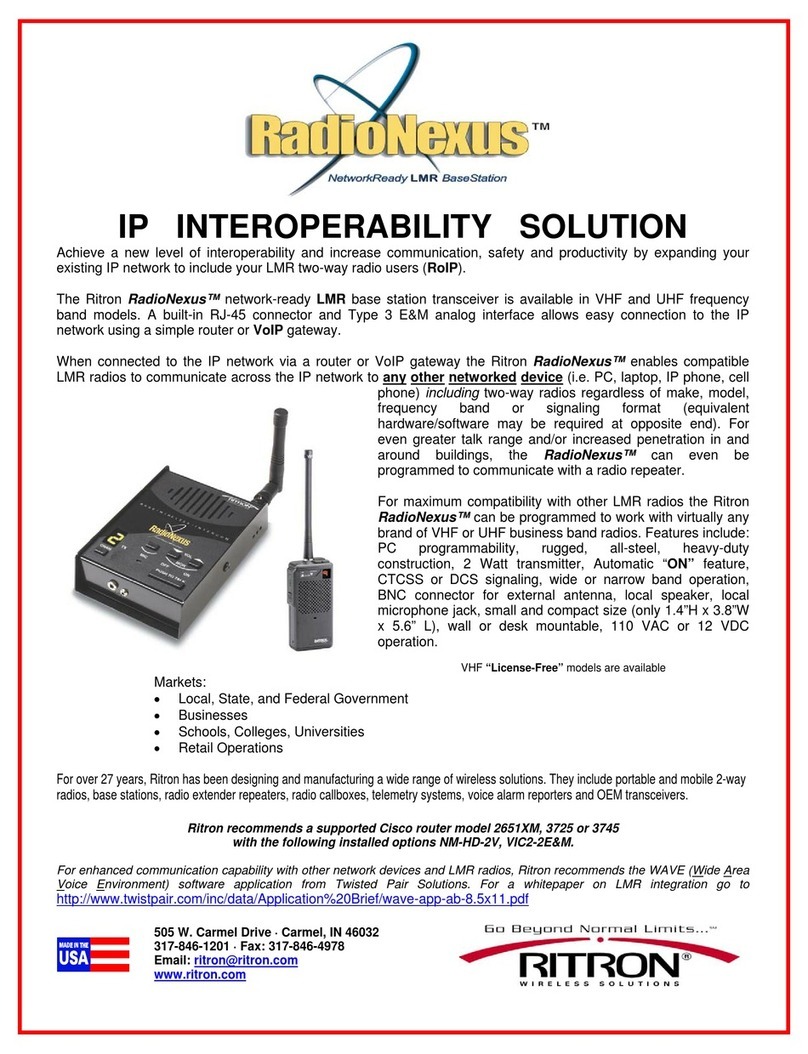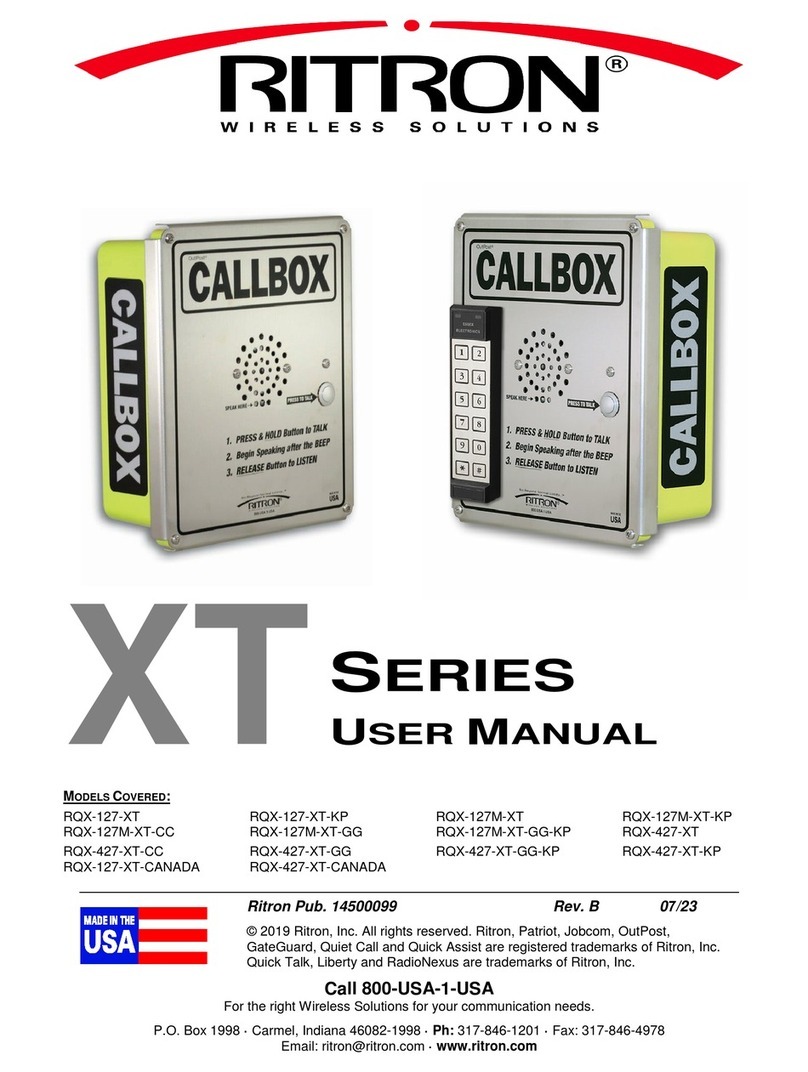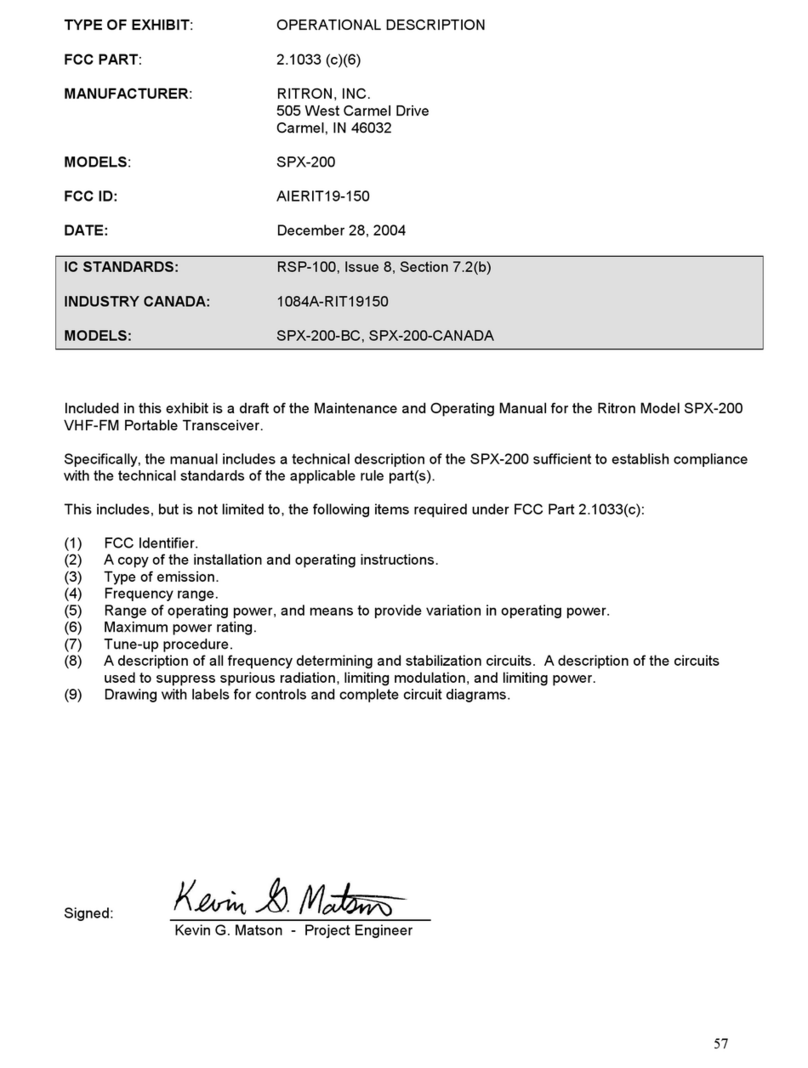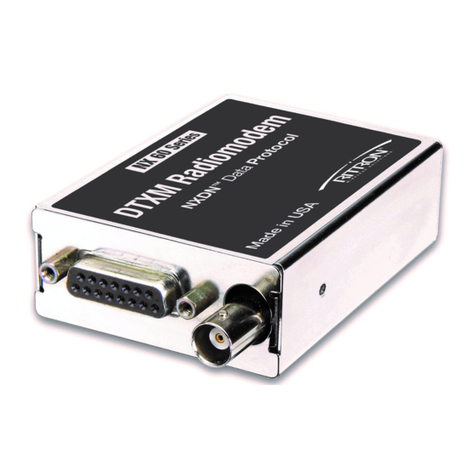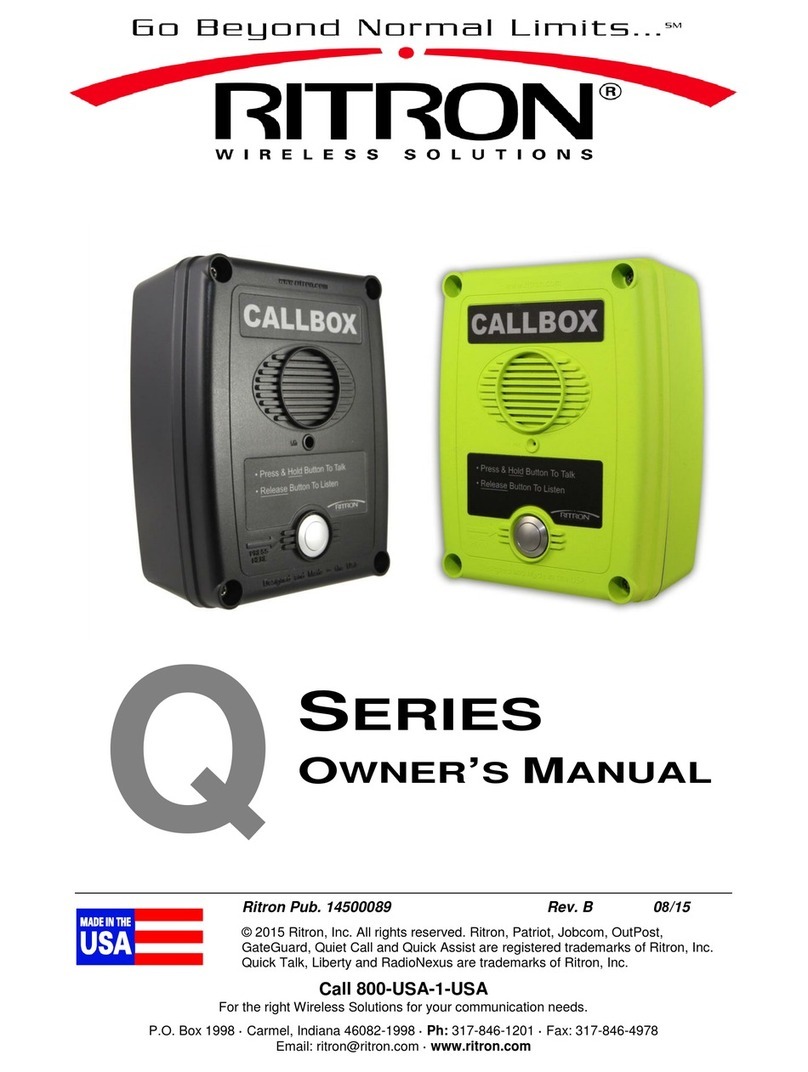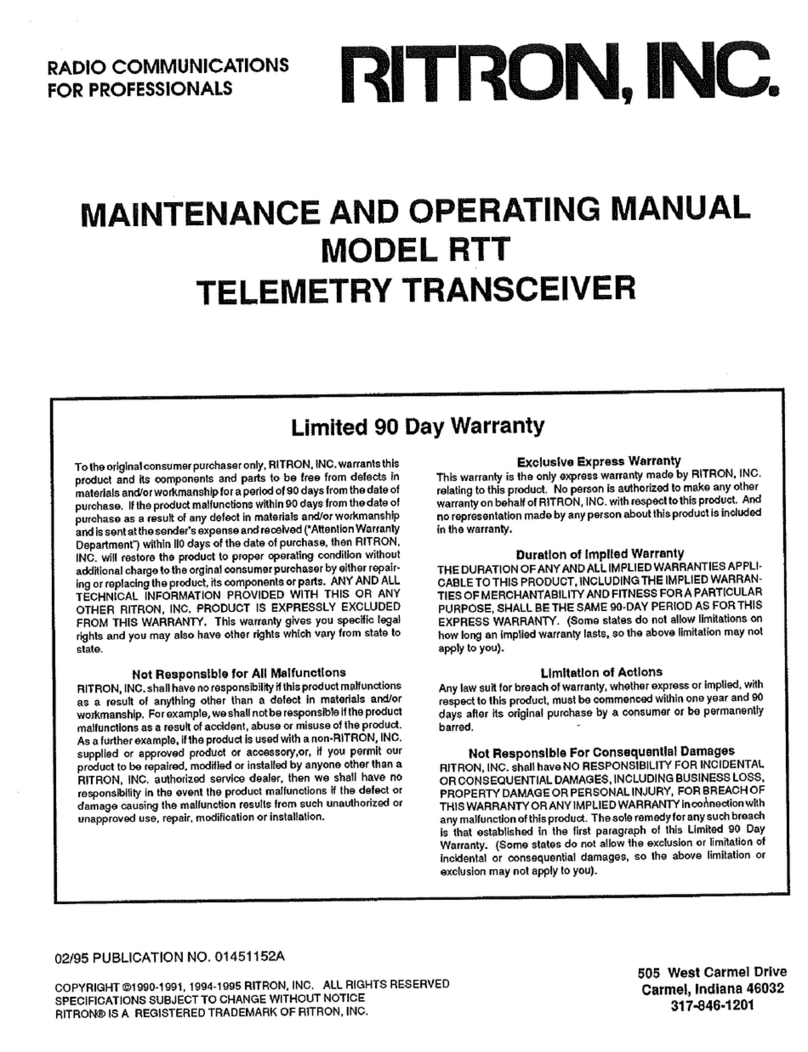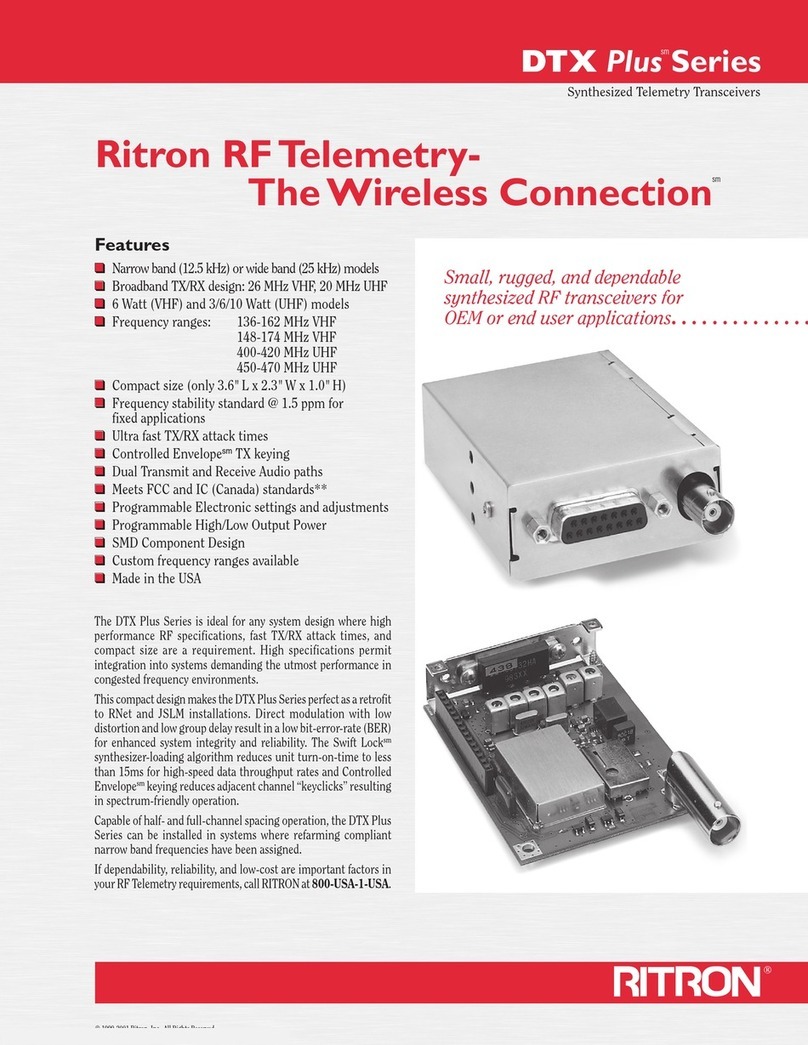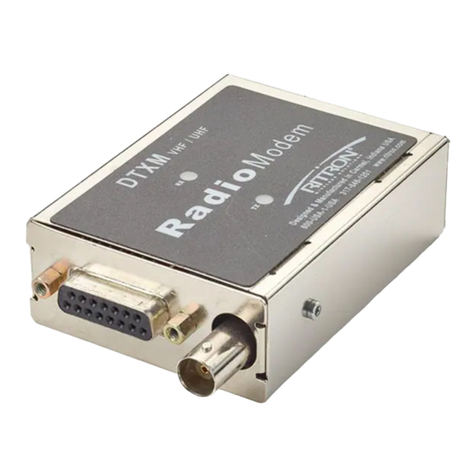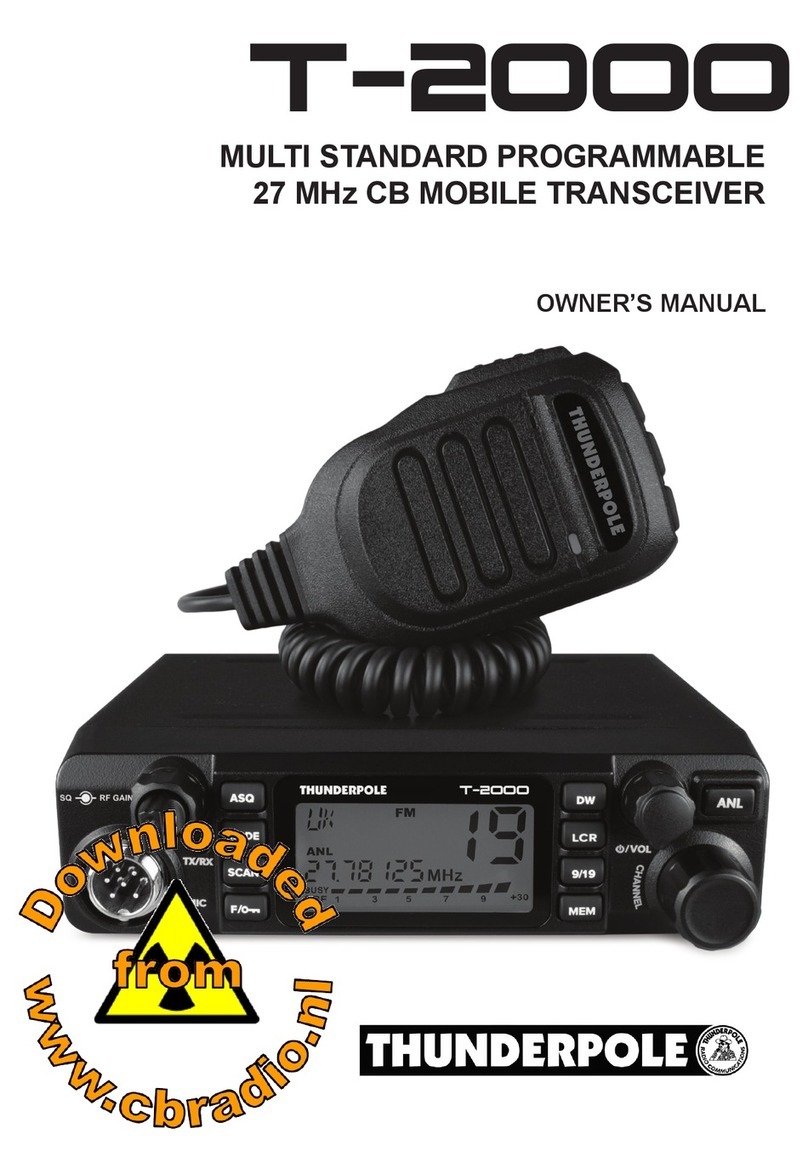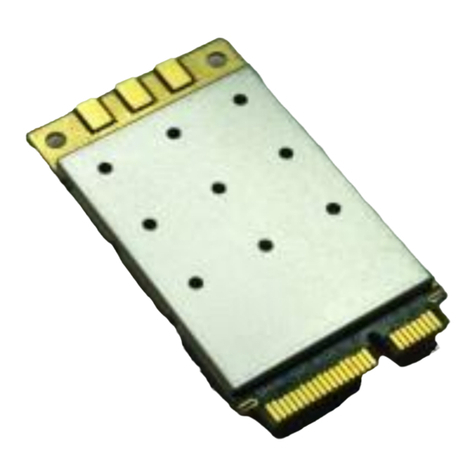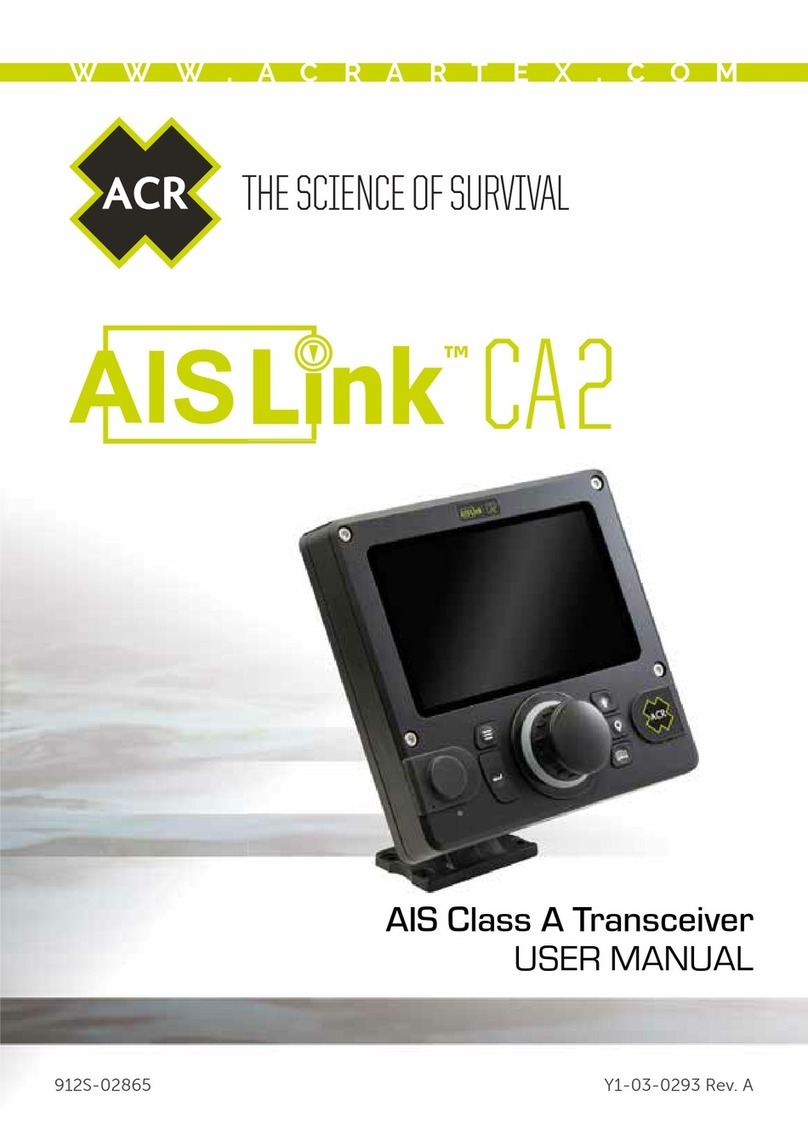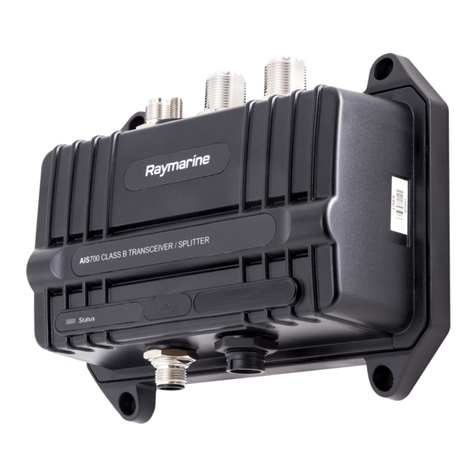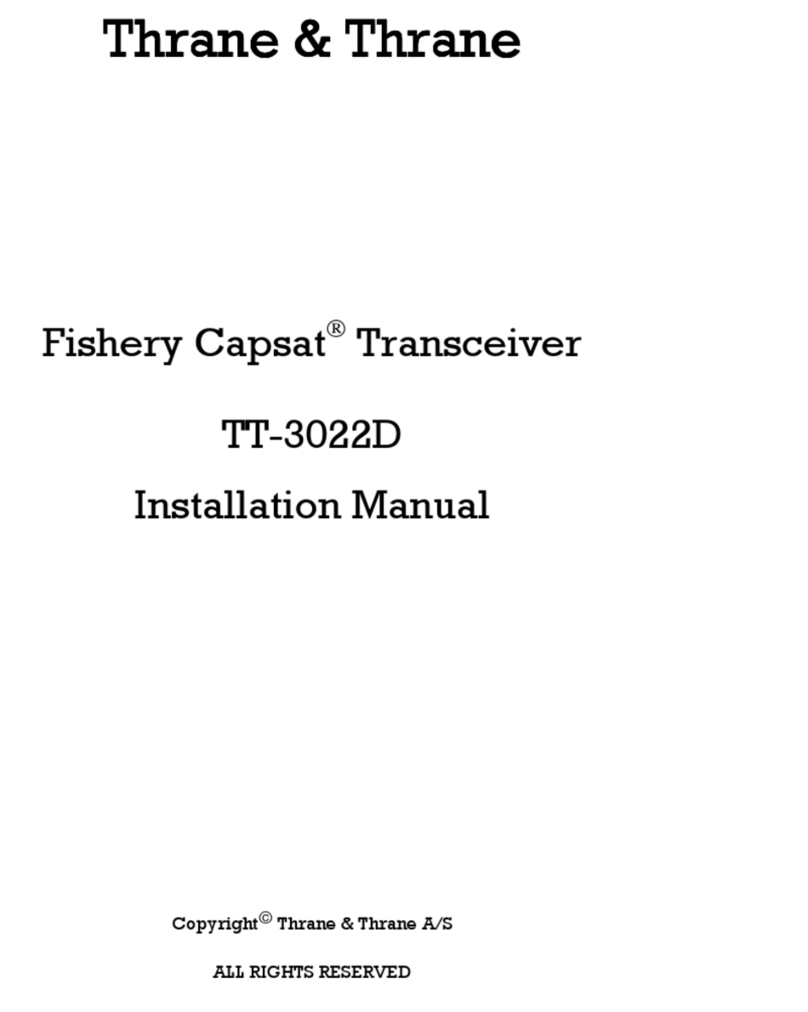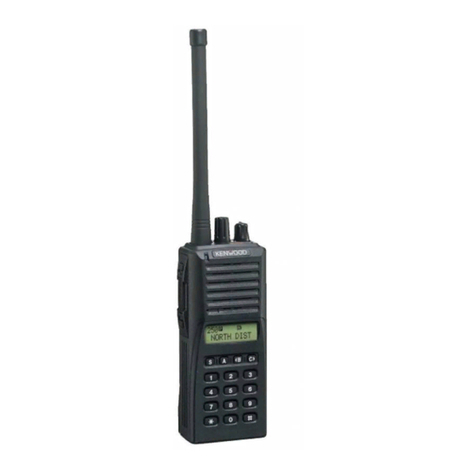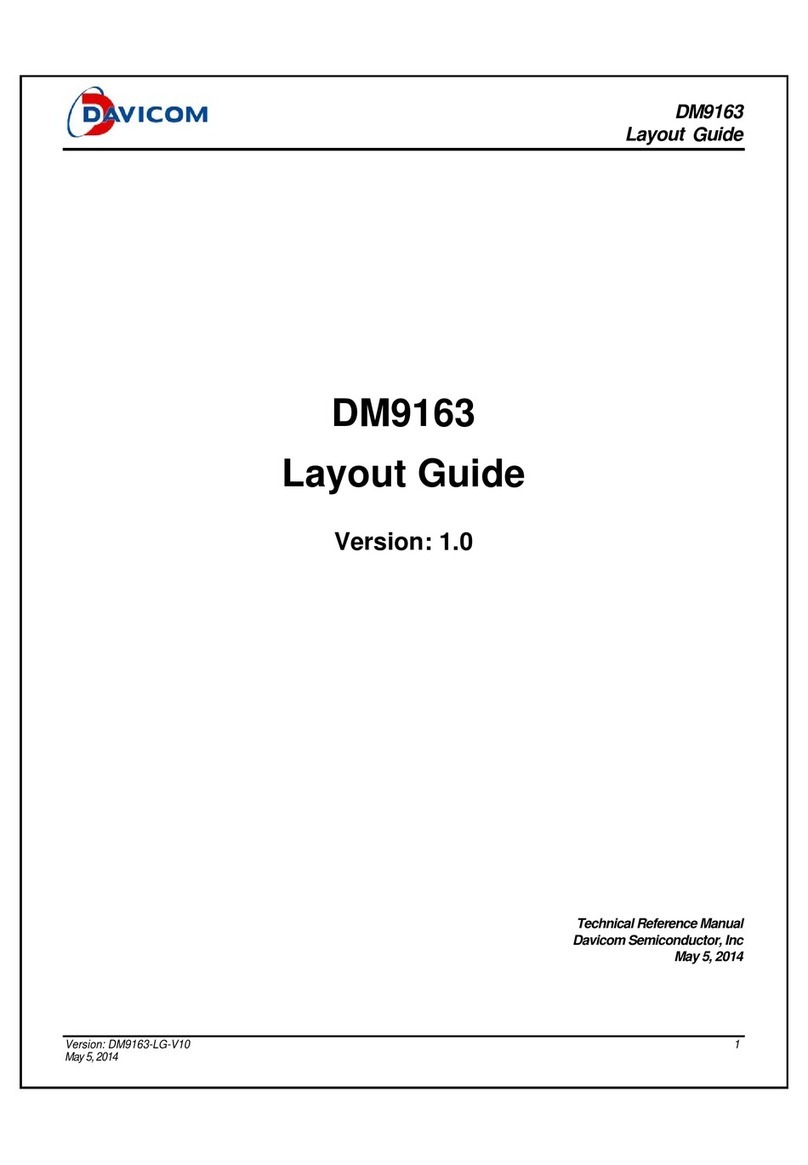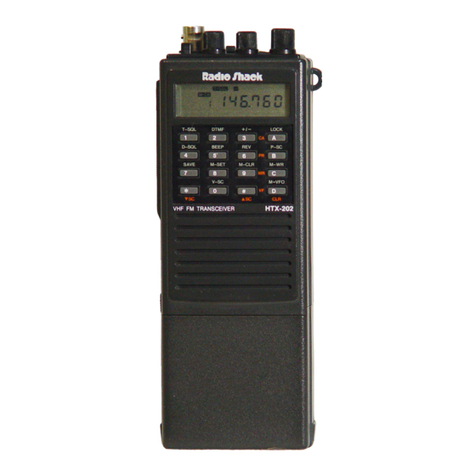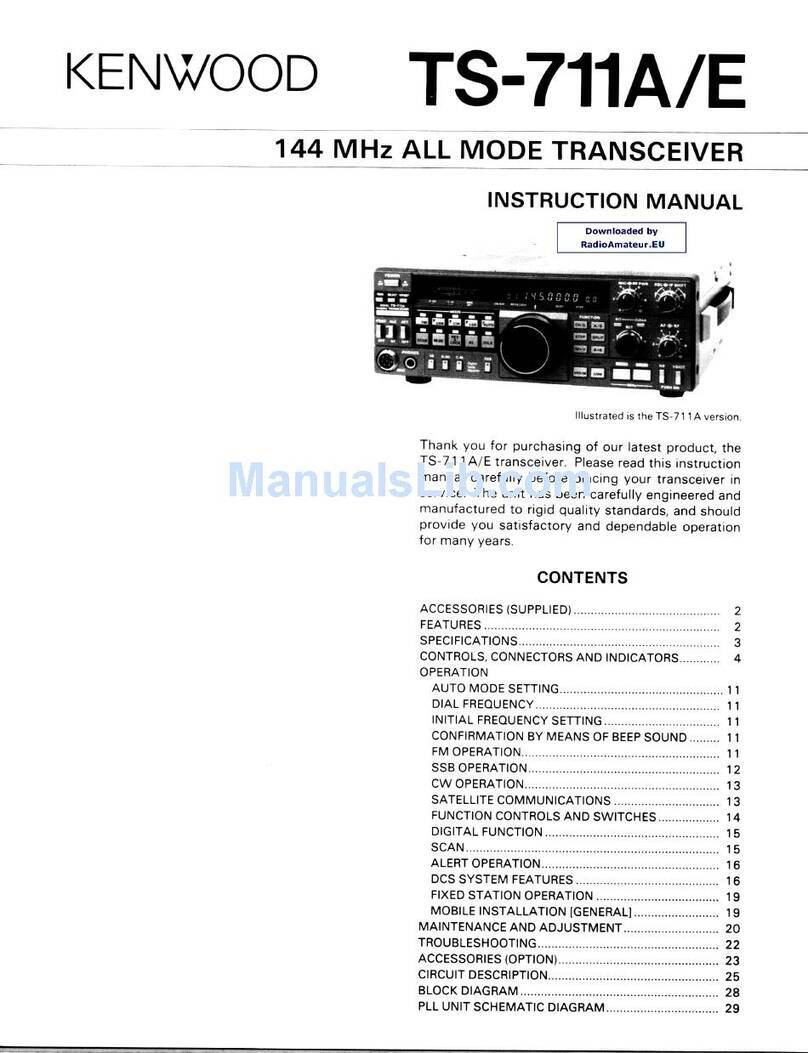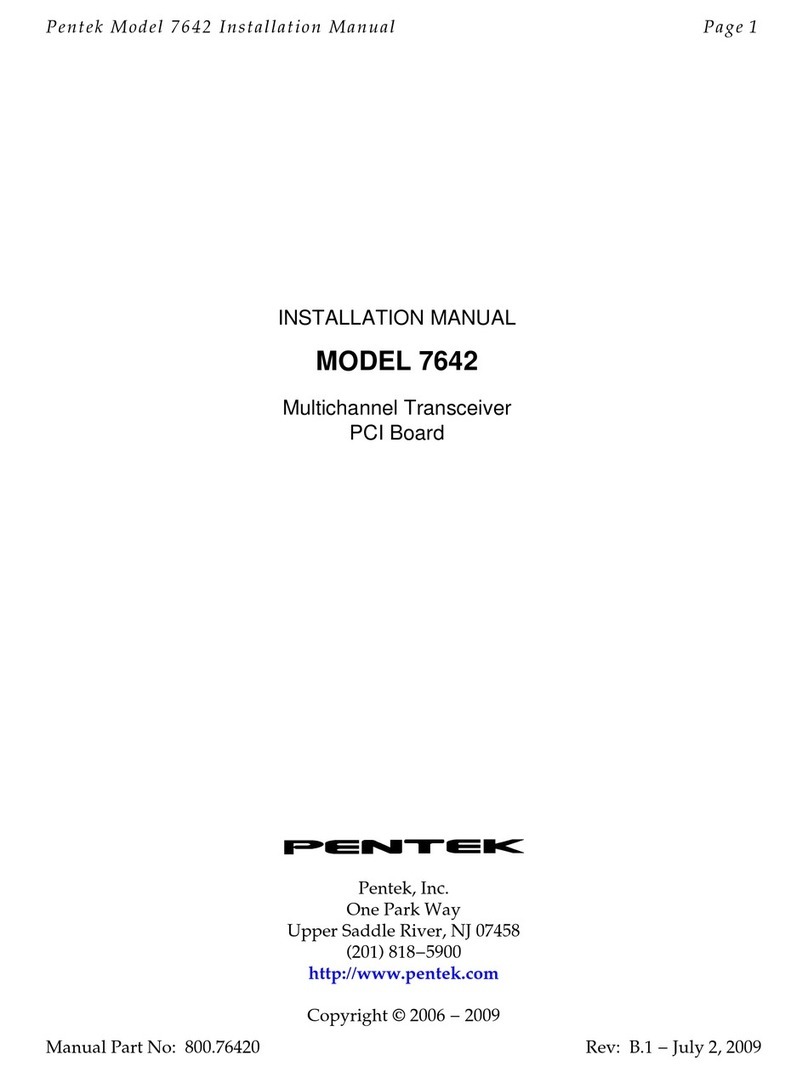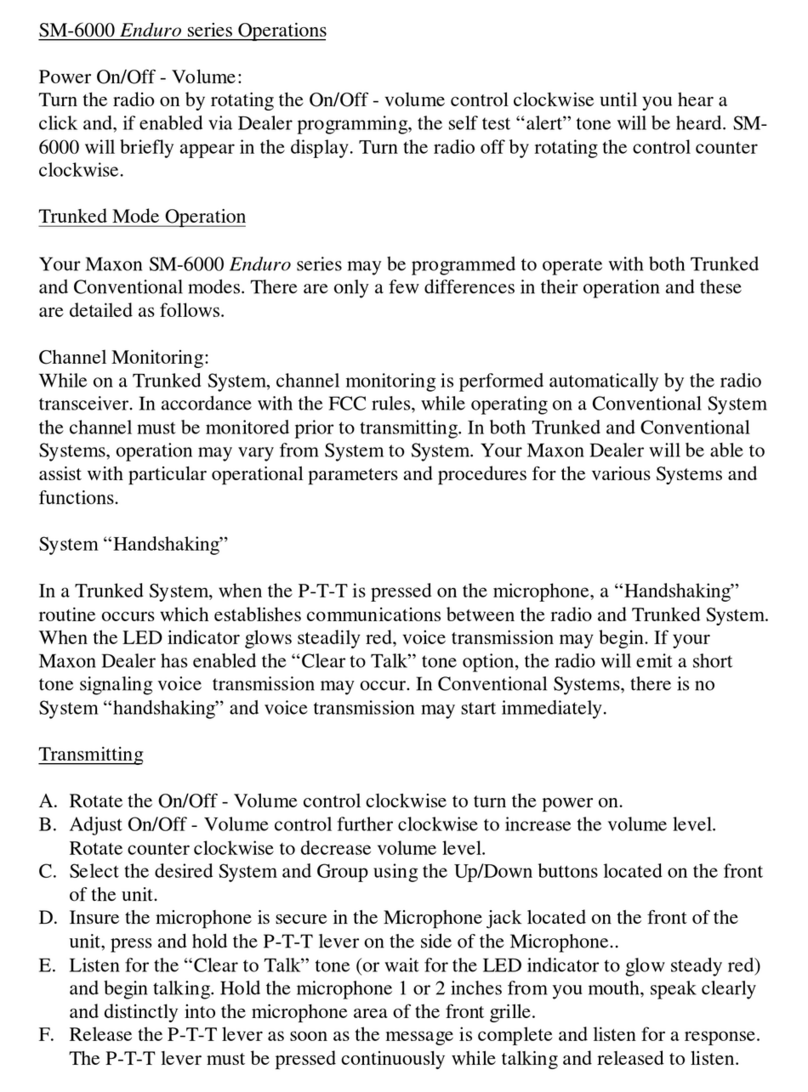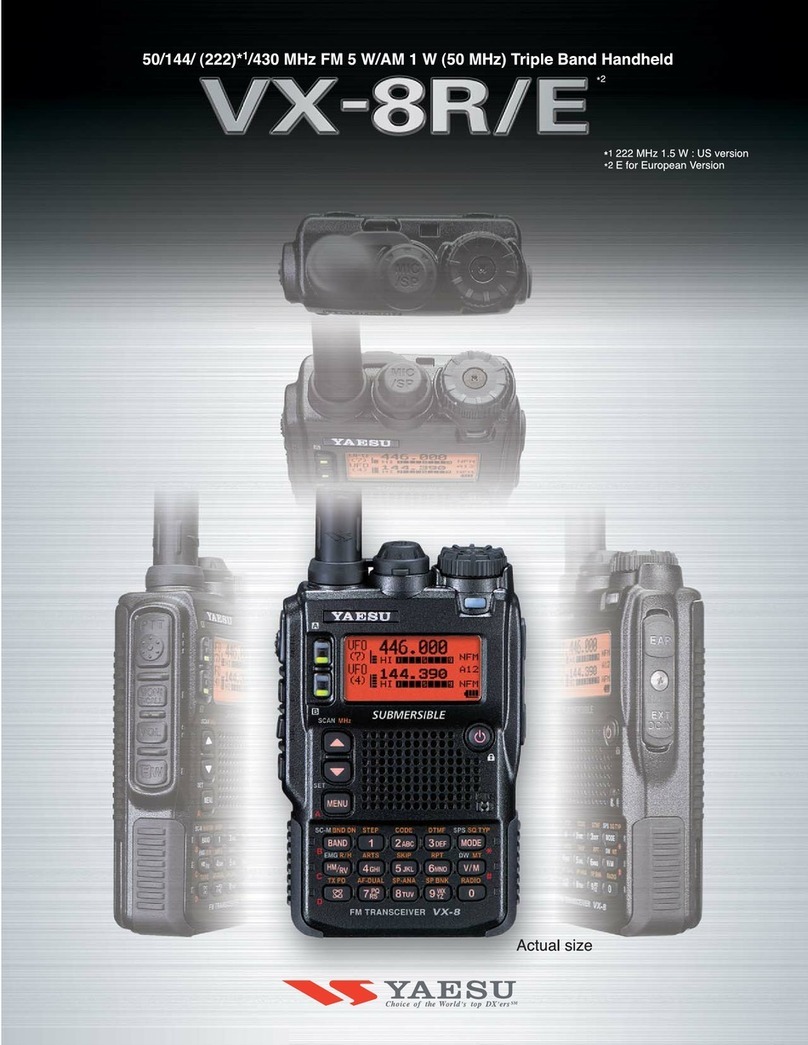
FCC Licensing Information
RITRON SPX Series professional two-way radios operate on radio frequencies that are regulated by the
Federal Communications Commission (FCC). In order to transmit on these frequencies, you are
required to have a license issued by the FCC. Application is made on FCC Forms 600 and 159.
Question regarding FCC license; contact the FCC at:
1-888-CALL-FCC
1-888-225-5322
Or: http://www.fcc.gov
Changes or modifications not expressly approved by Ritron, Inc. may void the user’s authority granted by
the FCC to operate this radio and should not be made. To comply with FCC requirements, transmitter
adjustments should be made only by or under the supervision of a person certified as technically qualified
to perform transmitter maintenance and repairs in the private land mobile and fixed services as certified
by an organization representative of the user of those services. Replacement of any transmitter
component (crystal, semiconductor, etc.) not authorized by the FCC equipment authorization for this radio
could violate FCC rules.
NOTE:
Use of this radio outside the country for distribution is subject to government regulations and may be
prohibited.
Safety and General Information
RF Operational Characteristics
Your radio contains a transmitter and a receiver. When it is ON, it receives and transmits radio
frequency (RF) energy. The SPX-200 VHF radios operate in the frequency range of 136-174 MHz, the
SPX-400 UHF radios operate in the frequency range of 400-470 MHz. When you communicate with the
SPX-200, the output power level is 1-5 watts, and with the SPX-400, the output power level is 1-4 watts
EXPOSURE TO RADIO FREQUENCY ENERGY
The SPX Series handheld radios generate RF electromagnetic energy during transmit mode. The
transmit mode is active when the PTT switch is depressed. This radio is designed for, and classified as,
“Occupational Use Only”, meaning that it must be used only during the course of employment by
individuals who are aware of the hazards and the ways to minimize such hazards. This series of radios
is NOT intended for use by the “General Population” in an uncontrolled environment.
When used as directed, this series of radios is designed to comply with the FCC’s RF exposure limits for
“Occupational Use Only”. In addition, they are designed to comply with the following Standards and
Guidelines:
• FCC OET Bulletin 65, Edition 97-01, Supplement C, Evaluating Compliance with FCC
Guidelines for Human Exposure to Radio Frequency Electromagnetic Fields.
• American National Standards Institute (C95.1-1992), IEEE Standard for Safety Levels with
Respect to Human Exposure to Radio Frequency Electromagnetic Fields, 3 kHz to 300 GHz.
• American National Standards Institute (C95.3-1992), IEEE Recommended Practice for the
Measurement of Potentially Hazardous Electromagnetic Fields-RF and Microwave.
To ensure that exposure to RF electromagnetic energy is within the FCC allowable limits for occupational
use, always adhere to the following guidelines:
• Use only the antenna(s) available from RITRON for these models. DO NOT attempt to
substitute any other antenna. DO NOT operate the radio without an antenna.
• Keep talk times as short and infrequent as possible. DO NOT depress the PTT button when not
actually wishing to transmit. These radios are equipped with an internal timer to limit
continuous transmit times. DO NOT exceed a 50% transmit duty cycle.
• When transmitting, hold the radio in front of the mouth at a distance of at least 4 inches. DO
NOT hold the radio in such a manner that the antenna is next to, or touching, exposed parts of
the body, especially the face or eyes while transmitting.
• In belt mounted applications, when transmitting, remove the radio from the belt and hold away
from the body at least 4 inches.



















